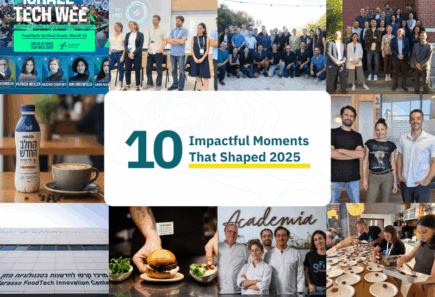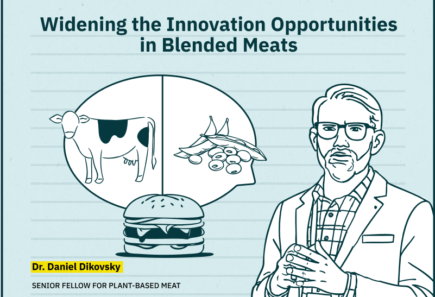Widening the Innovation Opportunities in Blended Meats
Widening the Innovation Opportunities in Blended Meats
Blended meat products are gaining traction as a smart bridge for flexitarians, combining familiar taste with a lower environmental impact. This blog explores how precision flavor engineering and reduced animal fraction could revolutionize blended meats, offering a pragmatic path toward more sustainable, scalable protein without compromising on consumer appeal.
Dr. Daniel Dikovsky
Senior fellow for plant-based meat
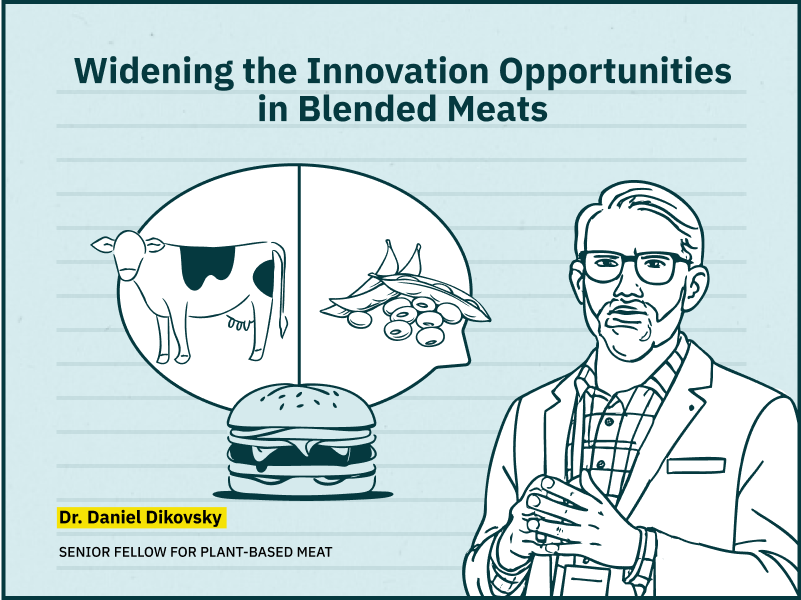
Blends are already working
The idea of combining animal and plant ingredients is no longer theoretical. NGOs such as the Good Food Institute (GFI), Food System Innovations (FSI) and its new Balanced Protein coalition now frame blended products as a fast, pragmatic bridge for flexitarians who want real meat flavor with a lighter footprint. Brands ranging from Perdue’s Chicken PLUS to several retail lines in Europe have shown that consumers will reach for a patty labelled “half beef, half veg” when taste and price feel familiar. 50/50 Foods’ Both Burger, for example, mixes equal parts beef and vegetables and is positioned squarely at meat-lovers who simply want to eat a bit less meat and a few more veggies.
First-wave blends deserve respect, yet invite improvement
Fifty-fifty burgers, dogs, and nuggets/tenders are already better for health, climate and affordability than their 100% animal-meat counterparts, and we expect that they will demand only moderate R&D tweaks plus a smart marketing narrative to help consumers understand their health advantages (higher protein/calorie, lower fat). They are therefore a very strong near-term step. Over time, we should be able to increase the proportion of plant-based protein (or mycoprotein) and these blends may well dominate certain quick-service channels for years.
At the same time, the very act of opening the formulation to animal inputs creates headroom for deeper innovation. If a 50% inclusion can satisfy many eaters, could 5 % do the same when deployed more surgically? Reducing the animal fraction further would boost sustainability and profits, while keeping flavor parity and the other benefits of blended meat products.
Why flavor, not texture, should be the next R&D target
Most of a burger’s roasted-meat aroma is generated where heat, proteins, amino acids, sugars and a bit of lipid meet: the outer one or two millimeters of the patty. The interior of even a 100% beef burger remains comparatively mild. Homogeneous blends therefore “bury” flavor precursors in the core, where they add cost but little sensory value. By contrast, plant proteins and existing binders already give us credible bite and juiciness; what lags is authentic beefy aroma.
A proposal: peptide-rich “Meat Dust” as a surface coating
- Upcycle lean, animal side-streams rich in Maillard-reaction precursors.
- Dry and mill the meat or meat extract to a sub-millimeter powder; optionally enhance precursor levels with a mild protease treatment.
- Surface-coat moist plant patties, strips, or chunks with a thin layer of this powder, supplying peptides, amino acids, and natural sugars exactly where browning occurs.
- Incorporate 2-5 % beef tallow into the matrix so the fat melts during cooking, undergoes controlled oxidation, interacts with Maillard pathways, solubilises volatiles, and rounds mouthfeel.
Early estimations suggest that < 10 % total animal mass applied this way can outperform a uniform 50 % blend in meaty aroma and flavor, precisely because every gram is positioned where it counts. Moreover, the decreased fraction of animal and lower demands for texture makes this option price competitive vs the 50-50 blends.

Open research questions for the community
- Gentle enzymatic hydrolysis – Exploring protease treatment (e.g., Alcalase) could double peptide-based flavour precursors; the challenge is balancing yield with off-note control and cost.
- Smarter particle engineering – Investigate optimum powder size and moisture to ensure even dispersion without special coating equipment.
- Process integration for scale – Adapt drying, milling and fat-mixing steps to existing high-throughput burger lines, minimising energy use and capital expense.
- Shelf-life & safety – Map how low-moisture meat powder affects frozen storage, microbial stability and thaw-to-cook handling.
- Consumer language & labelling – Test descriptors like “beef-boosted” or “flavour-catalysed” to convey sub-10 % animal inputs clearly and appealingly.
By putting these questions, and the coating concept itself, into the public domain, we create open invitation to many players to experiment.
Narrative & go-to-market guidance
- Celebrate every step down the meat curve. A 50 % blend is progress; shifting percentages in the direction of a 5 % flavor catalyst is the next milestone, not a competitor.
- Lead with benefits, not compromise. “All the sizzle, half (or one-tenth) the meat” is a positive message, especially when coupled with price parity.
- Localize wisely. Choose animal inputs that respect cultural norms and supply-chain realities in each region.
- Share vocabulary. The terms Blends and Balanced Protein already test best for trust and appeal; consistent use across companies will accelerate acceptance.
The more sensory punch we can squeeze from every gram of animal input, the faster Blended Meats will reach price-and-taste parity, and the faster mainstream consumers will join the protein transition.
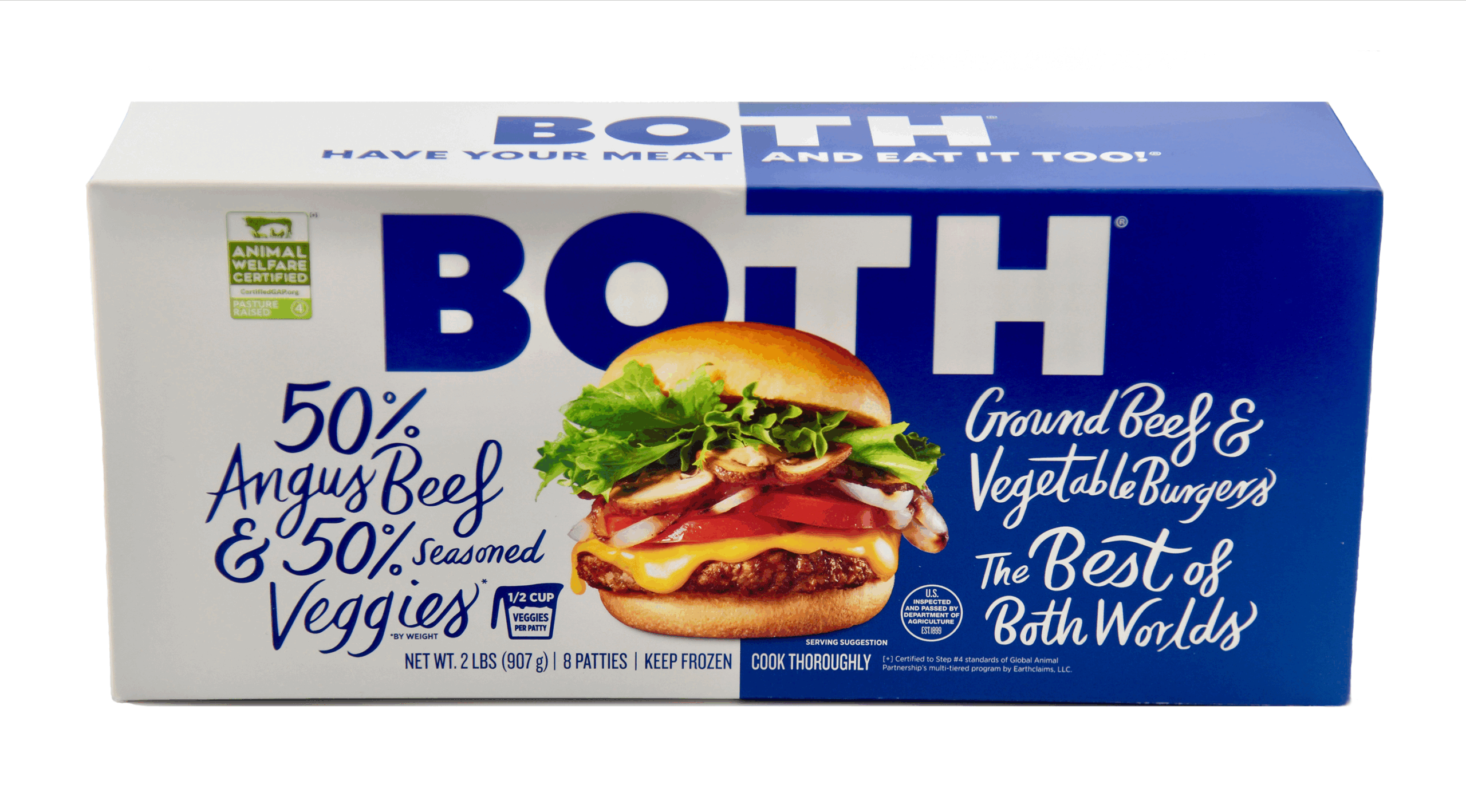
Dr. Daniel Dikovsky, Senior Fellow for Plant-Based Meat at The Good Food Institute (GFI) Israel and former CTO of Redefine Meat. Author of 40+ patent families spanning 3D printing, tissue engineering and alternative proteins.
For more on the promise of blended meat in an Asian context, see this perspective by GFI APAC in The Straits Times: “Blended meat could boost Asia’s food security”.
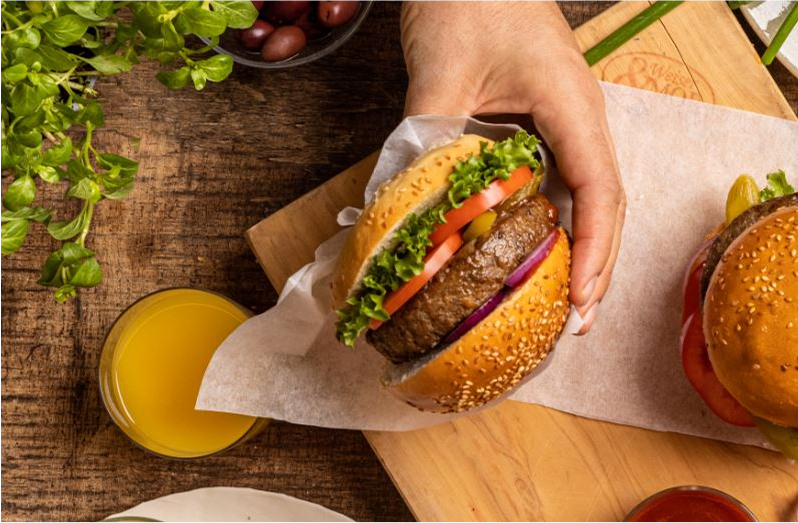
Are you interested in getting involved in the science of plant-based food, cultivated meat, and fermentation? Take a look at our resources or check out our science page.
If you’re a researcher:
- Find funding opportunities, check out our research funding database for grants from across the sector, and our research grants page showcases funding available from GFI.
- Explore our Advancing Solutions initiative, which highlights key alternative protein knowledge gaps.
- Use our academic research database and the collaborative researcher directory to find potential collaborators or mentors in the field.
- Find out about research projects that have already been funded on our research grants tracker or our grantee web pages.
- Look out for monthly science seminars run through our GFIdeas community, or use our local and global company database to identify commercial partners.
If you’re a student:
- Find educational courses around the globe through our database.
- Sign up for our free online course introducing the science of alternative proteins, explore our resource guide explaining what is available to students or newcomers to the space.
- Check out our careers board for the latest job opportunities in this emerging field.
Our news, events, and blog
View all of our open-access
publications & databases

